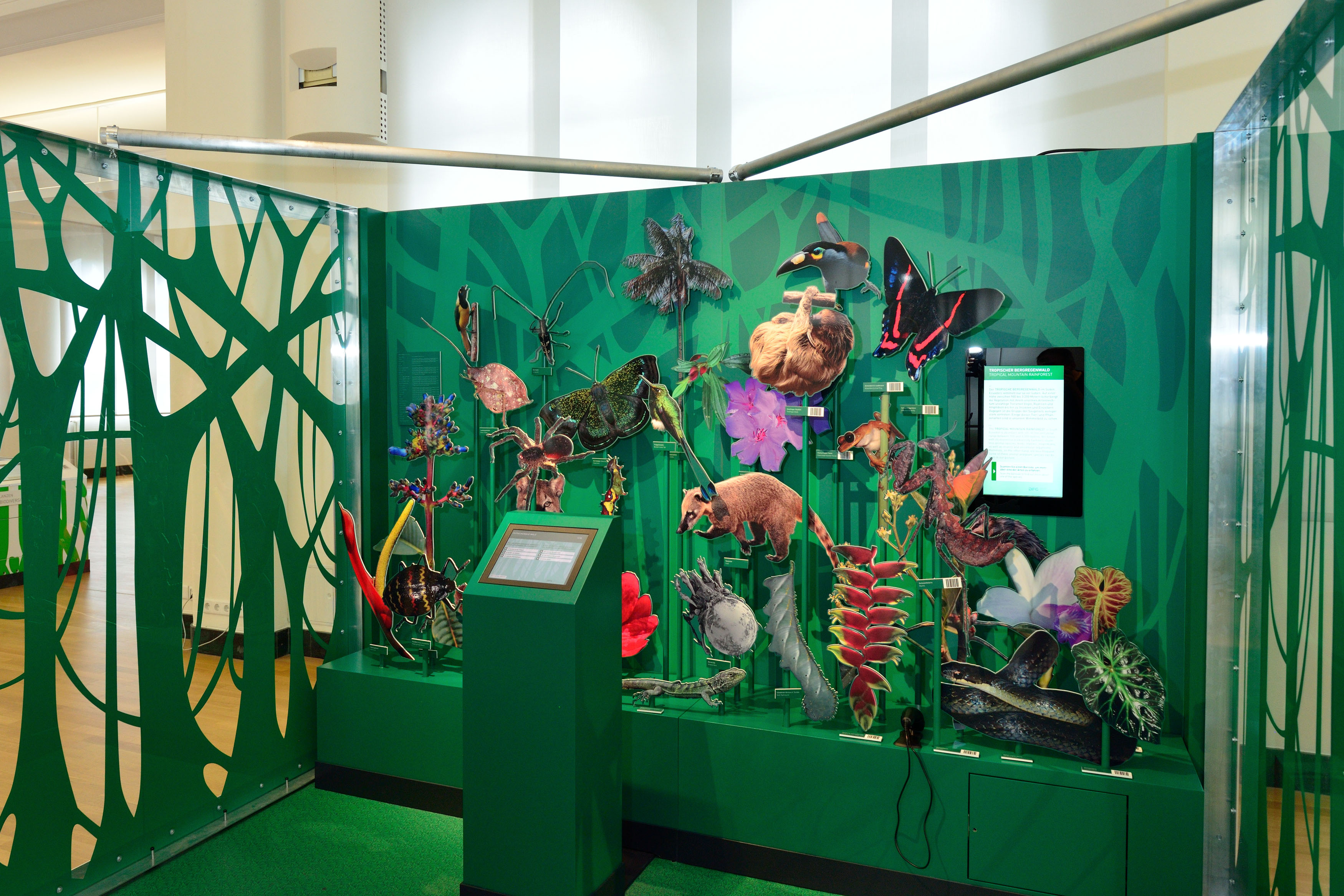Upward Trend for Biodiversity Research
(29.01.20) Biodiversity is an essential foundation for our lives. It not only encompasses different species of animals, plants, microorganisms, fungi and genetic diversity within species, but also complex ecological processes and interactions in a wide range of habitats on Earth. But biodiversity is under threat, with anthropogenic influence inevitably leading to species extinction. There is only limited reliable information available on the extent and impacts of these losses. However, there is reason to hope: in recent years there have been various initiatives to strengthen research into biodiversity, understand it in its overall nature and complexity, and identify different ways to protect it. The Deutsche Forschungsgemeinschaft (DFG, German Research Foundation) funds biodiversity research in numerous research projects and other initiatives.

From the exhibition "DIVERSITY MATTERS! - An Expedition Through Biodiversity" - Colourful diversity: forest habitats are brimming with life.
© DFG / J. Schumacher
The German Centre for Integrative Biodiversity Research (iDiv) is one of these initiatives. iDiv is a DFG research centre with around 400 researchers consisting of institutions in Halle, Jena and Leipzig. Researchers from 30 countries work here, identifying ways to sustainably exploit our planet's biodiversity. Using the idata platform, the researchers at iDiv can manage, describe, share, store and archive biodiversity and ecology data in line with the FAIR principles (findability, accessibility, interoperability and reusability).
The touring exhibition "DIVERSITY MATTERS! An Expedition Through Biodiversity", explains the importance of biodiversity and the scientific research being carried out in this field in an engaging way. The purpose of the exhibition is to make biodiversity and research on this topic accessible to a wider audience, and raise awareness of its importance through personal experience.
Through multimedia resources and interactive and multisensory installations, the exhibition explains at ten stations what biodiversity means, how research is done, why biodiversity needs to be protected and why it is so important for humanity. The exhibition is open to the public at the Japanese Palace in Dresden until 17 May 2020, and at the State Natural History Museum in Braunschweig from July to October 2020.
On the Other Side of the Atlantic
The scientific community in Brazil is also actively involved in this field of research and in recent years has received wide-ranging support from the Ministry of Science, Technology, Innovation and Communication, including funding to update the SiBBr platform, an extensive information system on biodiversity in Brazil.
Established in 2014 as a reference database on national biodiversity, SiBBr includes biological collections with data on 160,000 species and over 15 million entries on the occurrence of species throughout the country. In the second half of 2019, the Ministry of Science, Technology, Innovation and Communication, the Brazil environment section of UNO and the National Network on Teaching and Research in Brasília published an atlas of Brazilian biodiversity (SiBBr). The platform update includes biological collections held by 97 research institutions and national museums, and also facilitates data-sharing with other countries.
The purpose of this online platform is to bring together data on biodiversity and ecosystems from various sources in Brazil and abroad in order to make a qualitative and quantitative contribution to research. Another key contribution by Brazil to the internationalisation of research and science policy activities in this field is the country's active membership of the Global Biodiversity Information Facility (GBIF), as recently announced by the state secretary in the Ministry of Science, Marcelo Moraes. This new positioning will provide Brazil with active voting rights in the organisation, while giving Brazilian researchers access to information on biodiversity and enabling them to share it. With 46,731 recorded plant species and 118,928 animal species, Brazil has the richest biodiversity of any country in the world.
Another initiative of special importance is the Center for Synthesis in Biodiversity and Ecosystem Services (SINBIOSE), established in 2018 in partnership with various federal and state-level research funding bodies in Brazil (CNPq, MICTC, CAPES, FAPESP and CONFAP). This Brazilian programme involves an interdisciplinary approach which promotes the formation of working groups that process the collated data for Brazil, and make it available for research purposes and to government agencies and environmental managers.
SINBIOSE is an innovative research structure within a national scenario, developed because of the need to integrate information from a range of disciplines in order to generate scientifically and societally relevant new knowledge. Following international models such as iDiv, the centre offers an interdisciplinary and cooperative approach in the discussion of current issues relating to biodiversity and ecosystem services. It is open to international cooperation with other synthesis centres and research groups.
In August 2019, the National Council for Scientific and Technological Development (CNPq) opened a call for the funding of interdisciplinary and innovative projects, in line with the guidelines of SINBIOSE. A number of relevant topic areas were specified for this call, but it was also possible to propose other areas of research as long as the focus was on biological diversity and ecosystem services. The provisional result was published in November 2019 and the projects will begin in 2020 and last two years.
With information from: Ministry of Science, Technology, Innovation and Communication, SiBBr e Biosintese